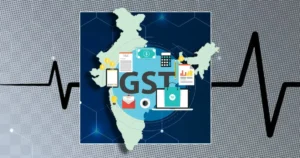
The Income Tax (I-T) department is expected to disburse tax refunds amounting to INR 2 trillion during the second half of the current financial year, contributing to a potential slowdown in the growth of personal income tax (PIT) collections. While PIT collections experienced an impressive 31% growth in the first half, the higher refunds will likely increase the total refunds for FY24 to over INR 3.5 trillion, compared to slightly over INR 3 trillion in the previous year.
Impact on PIT Collections: The surge in refunds will affect the growth of gross PIT collections, reducing it to an estimated 17-18% for FY24. Despite the slowdown, this remains significantly higher than the Budget Estimate (BE) of 11.4%. This suggests that the PIT collection for the fiscal year is expected to reach around INR 9.5 trillion, surpassing the BE of INR 9.01 trillion.
Yearly Progress: From April to September of the current year, PIT collections after refunds reached INR 4.52 trillion, constituting about 50% of the BE for FY24. In the first half of the previous fiscal year, only 43% of the annual target was met.
Administrative Measures and Economic Activity: The I-T department’s administrative measures have led to robust PIT collections, promoting better tax compliance and detecting tax evasion. Additionally, economic buoyancy, especially in the services sector, has positively impacted tax revenues.
Enhanced Taxpayer Services: The I-T department has expedited the refund process in recent years to enhance taxpayer confidence. The efficient handling of the e-filing portal, coupled with record ITR filings, demonstrates the successful modernization of services. Moreover, helpdesk support has played a pivotal role in addressing taxpayer queries.
Advanced Technology for Tax Enforcement: The I-T department employs data analytics, artificial intelligence, and machine learning to identify tax evasion and mismatched income declarations. This technology-driven approach enables efficient detection of tax evasion, leading to improved tax compliance and timely payments.
![]()




